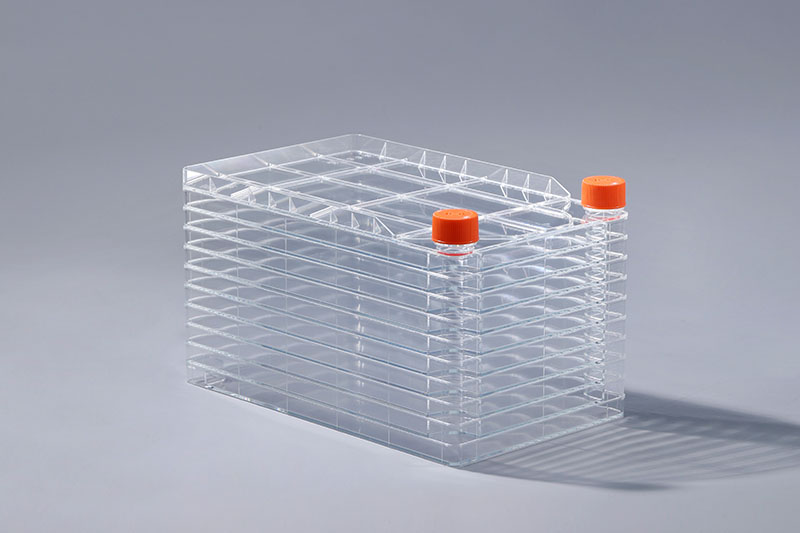The cell factory is a multi-layer structure of cell culture consumables, mainly used for large-scale in vitro cell culture. When culturing cells, a specific environment is required, and the gas environment and pH value are one of the most important conditions.
The gas environment that the cell factory refers to when cultivating cells is mainly carbon dioxide and oxygen. Oxygen participates in the cell's tricarboxylic acid cycle to generate energy for cell growth, proliferation and synthesis of various required components. Some cells can obtain energy through glycolysis under hypoxic conditions, but most cells cannot survive under hypoxia. Oxygen tension is usually maintained at slightly below atmospheric conditions, and if the partial pressure of oxygen exceeds the amount of oxygen in the atmosphere, some cells may be detrimental. When using open culture (dish or culture bottle loose-cap culture or culture plate culture), the cells are generally placed in a mixed gas environment of 95% air and 5% carbon dioxide.
Carbon dioxide is not only a metabolite of cells, but also an essential component for cell growth, and is related to maintaining the pH of the culture medium. In the case of low carbon dioxide concentration in a closed environment, cells are easy to grow; generally it cannot be lower than 1%, otherwise the cells will be damaged. If the open culture is placed in a gas environment containing 5% carbon dioxide, it is advisable.
Most cells are suitable for growth at pH 7.2~7.4, lower than pH 6.8 or higher than pH 7.6 are harmful to cells, and even degenerate or die. Different cells have different requirements for pH value. Generally, primary culture cells are less tolerant to alkaline pH value than acid tolerance, and an acidic environment is more beneficial to cell growth than an alkaline environment. In order to maintain a constant pH value of the culture environment, a method of adding a buffer such as phosphate to the medium is often used.
With the rapid development of the field of life science, cell factories are being applied to more fields. But no matter which field it is used in, the gas environment and pH value during cell culture are still one of the important conditions for cell growth.
The FAI climbed 5.9 percent year-on-year in the first 11 months of 2018, quickening from the 5.7-percent growth in Jan-Oct, the National Bureau of Statistics (NBS) said Friday in an online statement.
The key indicator of investment, dubbed a major growth driver, hit the bottom in August and has since started to rebound steadily.
In the face of emerging economic challenges home and abroad, China has stepped up efforts to stabilize investment, in particular rolling out measures to motivate private investors and channel funds into infrastructure.
Friday's data showed private investment, accounting for more than 60 percent of the total FAI, expanded by a brisk 8.7 percent.
NBS spokesperson Mao Shengyong said funds into weak economic links registered rapid increases as investment in environmental protection and agriculture jumped 42 percent and 12.5 percent respectively, much faster than the average.
In breakdown, investment in high-tech and equipment manufacturing remained vigorous with 16.1-percent and 11.6-percent increases respectively in the first 11 months. Infrastructure investment gained 3.7 percent, staying flat. Investment in property development rose 9.7 percent, also unchanged.
 English
English



















































